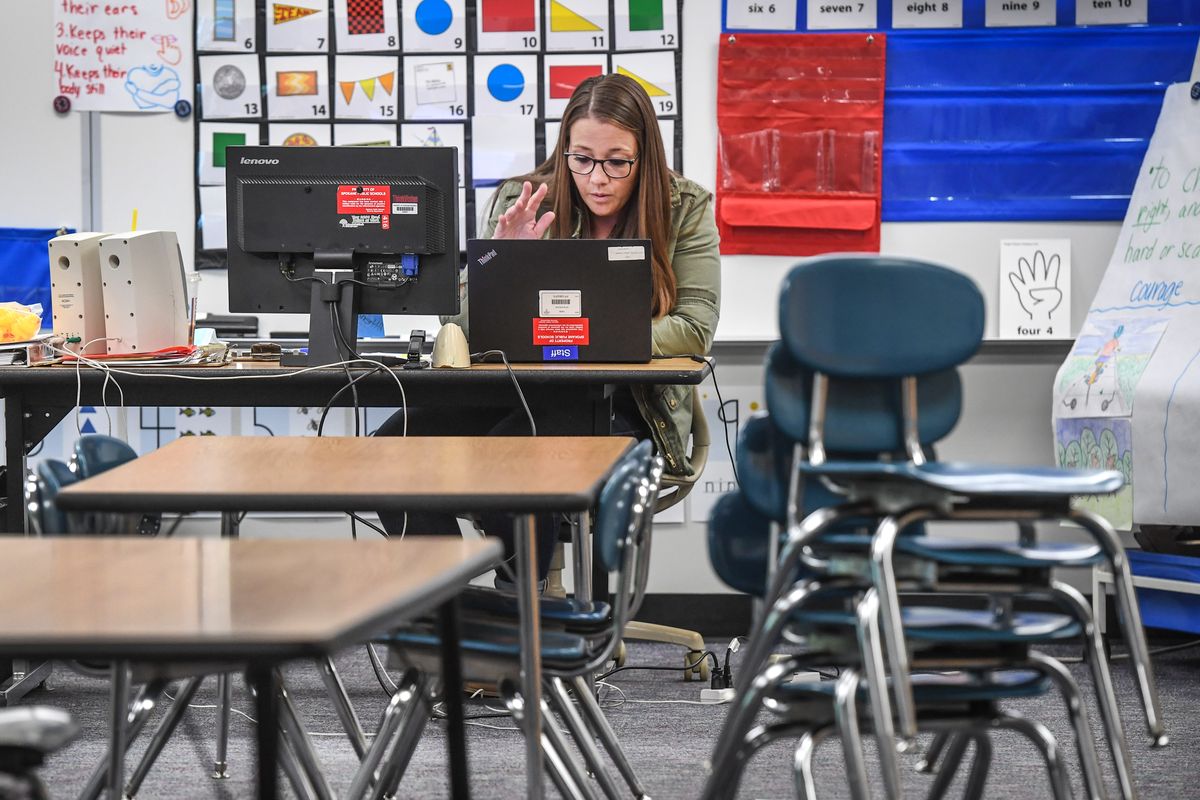Like it or not, schools are moving forward

The first step is often the hardest, especially when you’re walking a tightrope in front of a skeptical audience.
Even as Spokane County’s two largest school districts made the first tentative move Wednesday night toward reopening their buildings for kindergartners only, hundreds of critics weighed in on social media.
For those who noted the spike in positive COVID-19 tests that same day, Spokane and Central Valley are moving much too quickly.
But for the single mom stuck at home with a first-grader and an unstable internet connection, events aren’t moving nearly fast enough.
“Three-and-a-half hours is way too much time for video conferencing in the morning,” Spokane parent Heather Christner posted on the district’s Facebook page. “My first-grader cannot handle it. I’m blown away by how great his teacher and school have supported us, but this model simply does not work for a 6-year-old.”
Other families are plagued by technical issues.
“My daughter couldn’t even go to class this morning,” said Tessa Riegel, another Spokane mom. “The school computer would not work. … I had to email tech support, and still waiting for a response. Kids need to go back to school. My kids aren’t learning anything this way.”
Another Spokane mom, Carla Franklin, complained that her children’s laptops “can go about 30-45 minutes before their computers overheat and shut down. One of them we have to wait nearly 20 minutes for it to cool enough to turn back on!
“Every time I have gone to the school to exchange it, no one answers the bell at the front doors.”
Others questioned the timing of the announcement, which came on a day when Spokane County reported 126 positive coronavirus tests, the most since Aug. 6.
“What do you think a few weeks of remote learning will do if they all go back and immediately start spreading COVID to their family?” asked Spokane parent TW Ryan. “Dozens of new cases a day doesn’t seem like a safe time to return.”
Surveys conducted by Spokane and other districts show that most families want their children in classes – the sooner the better.
Some of the harshest criticism came from parents of old students. They fear that if districts follow their initial pace and add new grades every two or three weeks, it will take months for older students to get back into classrooms.
Because middle and high schoolers attend different buildings, parents questioned why, for example eighth- and 12th-graders couldn’t be sent back as well as kindergartners.
Shannon Rae Castelda, the parent of a high school freshman in the Central Valley district, posted: “You cannot continue to expect this virtual school for our children and not have lasting effects. And, sports? Activities? Clubs? Do our kids get those back?”
Melody Olsen Pugh of Spokane worried that her high school children would suffer as they prepared for college prep tests and other issues.
“Why is it only considered important for the youngest students to get back to in-person learning?” Pugh posted.
Reached Thursday afternoon, Dr. Bob Lutz of the Spokane Regional Health District noted that older children, especially teenagers, pose a significantly higher risk.
“They are a different breed,” Lutz said.
Reiterating his comments earlier this summer about opening cautiously, Lutz said that the 10- to 19-year-old age group “has demonstrated that they transmit and contract like adults.”
Lutz sees a greater need to get the youngest students back in classrooms.
“You cannot teach a kindergartner to learn on a computer from home,” Lutz said.
Moreover, by opening doors to kindergartners, districts will be able to “get their processes in place,” Lutz said. “There are lessons to be learned by working through their plans.”
That will happen soon. Spokane, Central Valley and West Valley are now fine-tuning their plans.
On Thursday, Spokane Schools released the contents of the PowerPoint document Superintendent Adam Swinyard used to present the details to the board.
More details will be shared with parents next week, he said Wednesday night.
The highlights include a phasing-in of kindergartners beginning Oct. 7 using an alternate schedule and a school day running from 8:30 a.m. to 2:25 p.m.
Students will attend each day in classroom cohorts of 20, and will eat and take recess as a group.
At Central Valley, kindergarten students will begin with a phase A/B approach.
Some students will begin on Oct. 5, while others will attend school the following day. The school day will begin at 9:30 a.m. and end at 3:10 p.m.
West Valley’s model calls for 50% of kindergartners to be in the classroom and the rest distance learning on a rotating schedule.
Cohort A will be in classrooms on Monday, Thursday and every other Wednesday.
Cohort B will be in classroom on Tuesday, Friday and every other Wednesday.